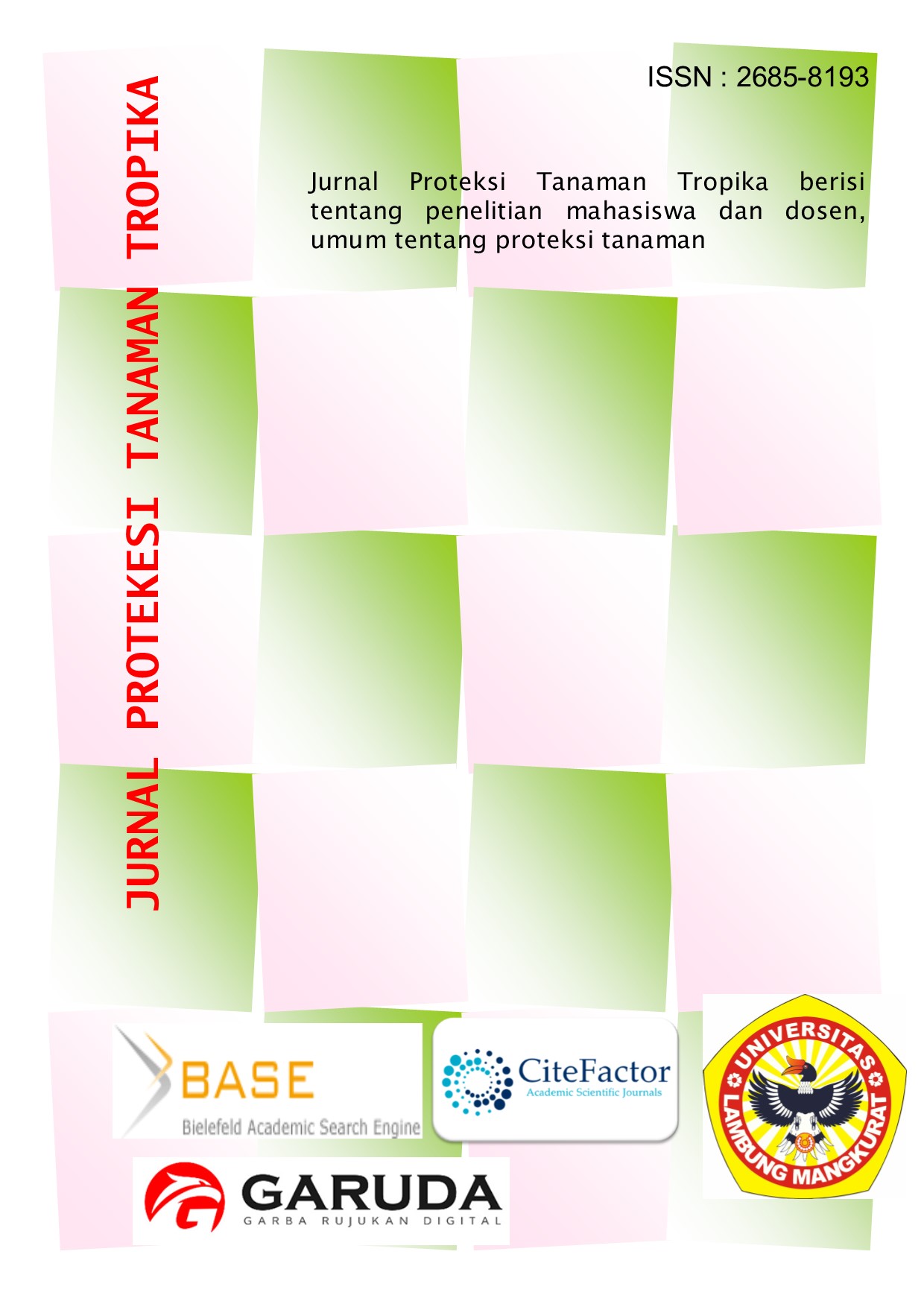The Effect of Differences in Paranet Height on Pest Attacks In Large Chilies (Capsicum annuum L)
Abstract
Large chilies are one of the vegetable commodities that are still widely consumed and in demand, so demand in Indonesia continues to increase along with population growth. However, large chili plants are susceptible to pest and disease attacks which result in decreased production. One of the main problems in cultivating large chilies is pest attacks. Some pests that often attack chili plants include thrips (Thrips parvispinus), whitefly (Bemisia tabaci Genn), aphids (Aphis gossypii Glover), fruit flies (Bactrocera spp.) and other pests that can inhibit plant growth. Some pest control methods that can be applied include the use of yellow traps, the use of natural enemies, environmental sanitation and various other methods. This research uses paranets as a tool that is expected to reduce pest attacks that can harm chili crop yields. The method used was a Completely Randomized Design (CRD) with five paranet height treatments, namely without paranet, 50 cm, 75 cm, 100 cm and 125 cm. Each treatment consisted of four replications with four plants per experimental unit so that there were a total of 80 plants. Observations were made by recording the type and number of pests and observing damage to large chili fruit. The research results show that the use of paranets can reduce the number of pests that attack large chili plants and reduce the percentage of fruit damage due to pest attacks.






